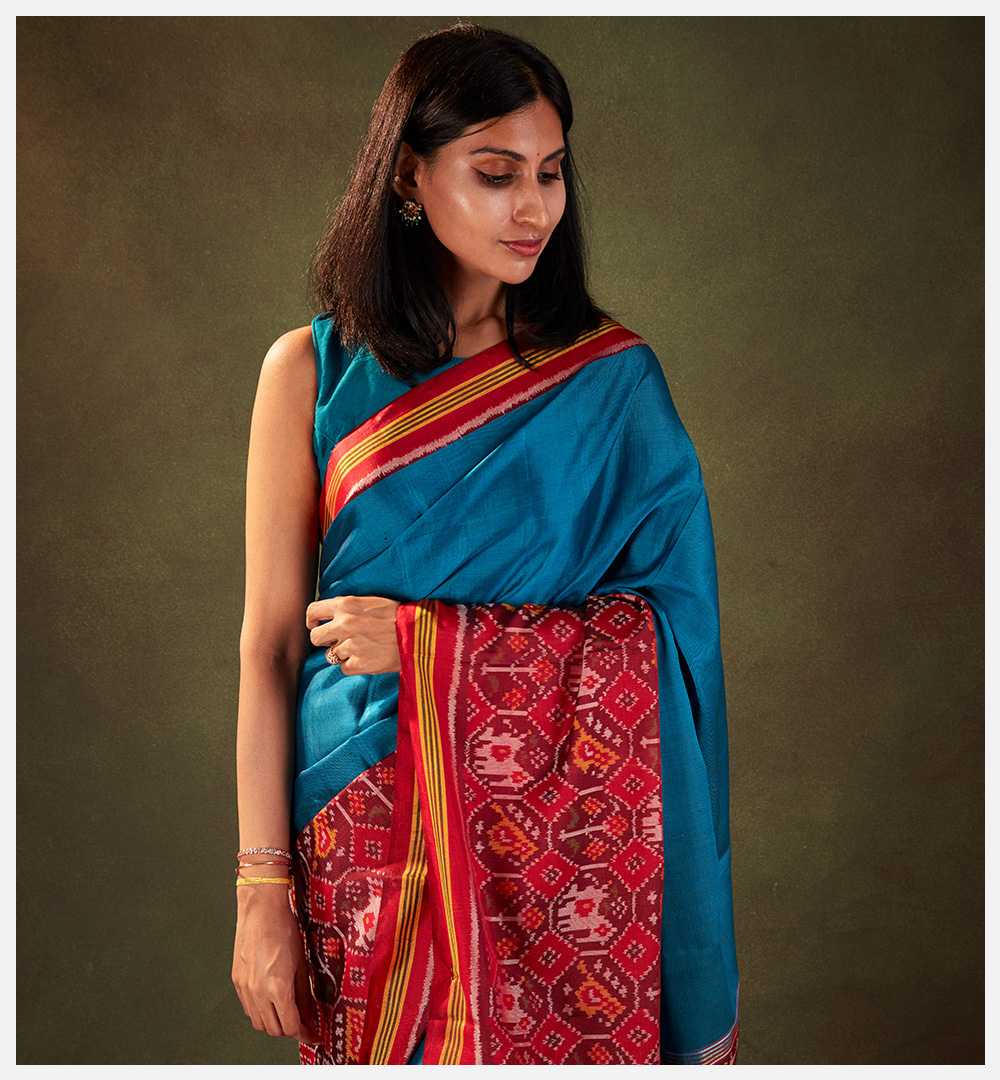Ikkat Sarees - The Indonesian Icon
A History Briefing
The iconic Ikkat fabric has its origin in Indonesia and the word Ikkat is derived from the Indonesian word “MangIkkat'' meaning to bond or to tie. From there it was carried along the “silk route” by merchants and travellers to India, Central Asia and later, to Europe. The Ikkat then flourished in its new-found homes adapting to the local conditions and absorbing new colours and textures. The weaving process is quite complex and requires the dexterous hands of a master craftsman weaver. With the design plotted on a graph, the warps and wefts are dyed and dried separately and then brought to the loom for perfect matching, alignment, and weaving. This is for the “single Ikkat”. The “double Ikkat'' involves a much more laborious and detail-oriented process for that beautiful, magnificent finish.
Characterising the Ikkat
Although rooted in its renowned, rich history, the Ikkat saree also embraces modernism in a very rapturous way. The contemporary Ikkat saree caters to the modern design aesthetic, by encompassing abstract, geometric, and environmental motifs in its design element. While the flora and fauna motifs spell a classic style, the linear, wavy, and triangular motifs cry out “Bohemian”. Add the modern colour palette to this and viola, we have a stunning masterpiece saree that can make heads turn anywhere – a simple house party, a ravishing ramp walk event, a sublime spiritual gathering, or a grandiose wedding occasion.
Styling Tips
Saree draping styles have undergone a sea change in recent years and the saree is no more considered a traditional garment Pair the Ikkat saree with a silken shirt and wrap a leather belt around the waist – you have a formal boardroom look; wear it with a puff-sleeved blouse and tie up the hair in a messy high bun style, you ooze a retro vibe, sport a waist length kurta with an Ikkat saree, accessorising with Jhumkas and a big bindi, you are ready for a wedding party; the Gujarati saree drape (seedha palla) with big noserings and glass or metallic bangles gets you primed for a Dandiya Raas dance. Whatever the style, the six yards of Ikkat magic weaves an aura of elegance about you, making you feel special and exceptional.
Colours That Pop Out
Ikkat sarees come in a kaleidoscope of colours and present a visual treat to the eyes. The earth’s natural hues like maroon, rust red and brown, the sky’s dreamy tints like light blue, peach and deep orange, water’s glassy, grey, green, mossy and crystal tones and also vivid reds, pretty pinks, vibrant violets and indigo blues fall under the wide umbrella of colours that Ikkat sarees come in. The beauteous burst of colours is a result of the use of natural dyes like madder root, indigo, turmeric, cochineal (from insects), and weld, all of them extracted from plants, trees, and other natural sources. The colours in Ikkat fabrics are bold, subtle, cool, intense, delicate, toned, vibrant and dazzling, thereby engulfing the entire panorama of colour shades.
To drape oneself in an Ikkat saree is to put on a tapestry of an age-old culture and artistry. The silken feel of these saree creates a warm, fuzzy feeling of holding oneself in an ultra-luxurious zone of ultimate elegance. With the festival season underway, come to Tulsi Madras to have a look at our imposing and irresistible Ikkat saree collection.


